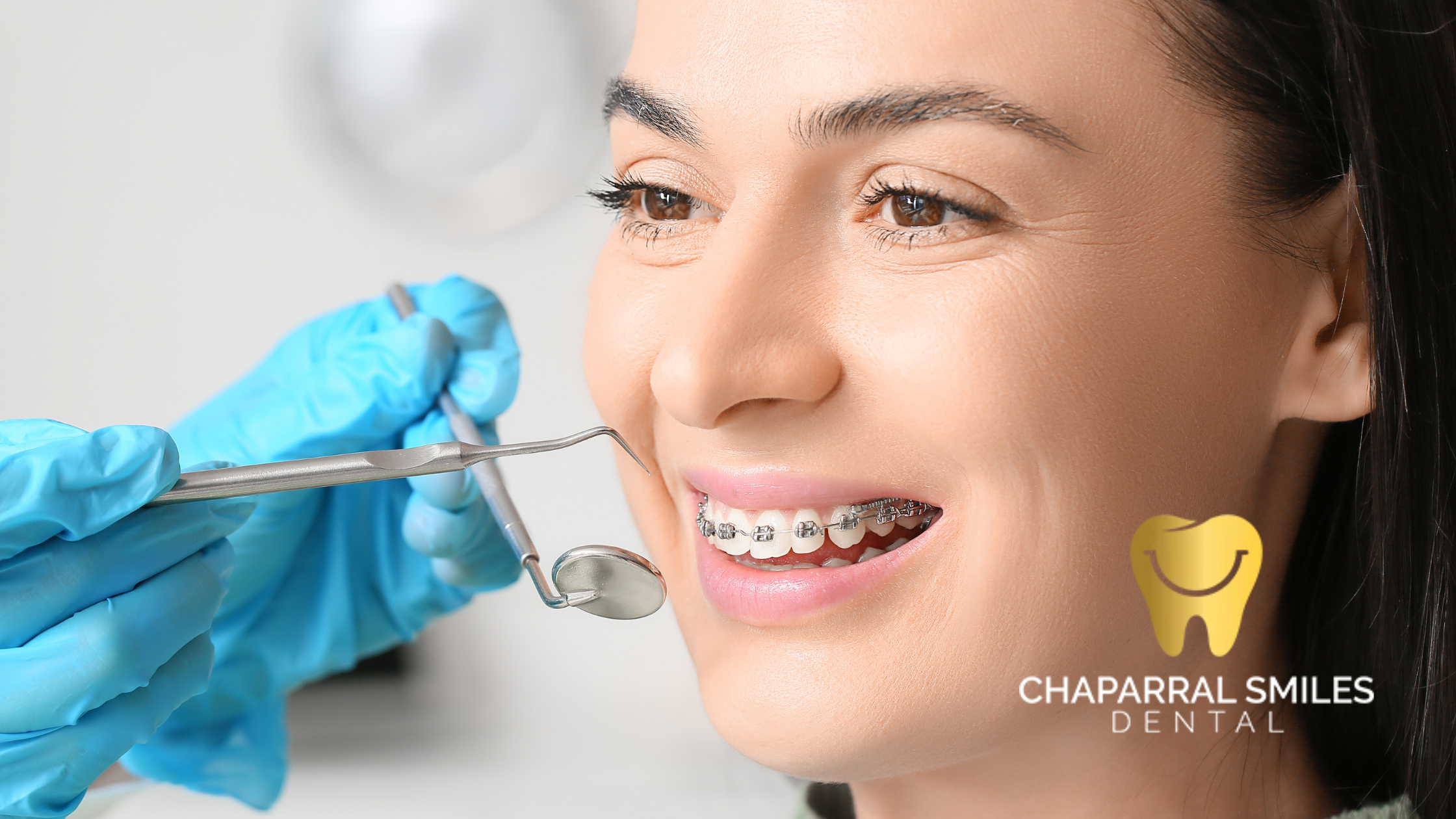Orthodontics is not just for children and teenagers; adults can also benefit significantly from orthodontic care. If you’ve been considering straightening your teeth or correcting bite issues, you might wonder if it’s too late to seek treatment.
Fortunately, advancements in orthodontic technology have made it easier than ever for adults to achieve a healthier, more confident smile at any age. This post will explore the options available and why prioritizing dental health matters, regardless of when you start your journey.
Key Takeaways:
- Orthodontics is viable for adults. It is never too late to pursue orthodontic treatment; adults can achieve a straighter smile and improved functionality.
- Customized solutions are available: Treatment plans, including clear aligners and traditional braces, can be tailored to individual needs.
- Long-term benefits are significant: Investing in orthodontic care can enhance overall health and boost self-esteem.
Understanding Adult Orthodontics
Before exploring adult orthodontics, one must appreciate that achieving a straight smile or correcting bite issues is not limited to age. Many adults seek orthodontic care for various reasons, including aesthetic desires or health-related improvements.
Fortunately, modern techniques like clear aligners and discreet braces make treatment options more accessible and appealing for adults.
Common Misconceptions
To many, orthodontics primarily caters to the development of children and teenagers, leading to the false belief that adults cannot benefit from it. People often think that their oral health is too advanced or that treatment will take too long and be uncomfortable.
However, these misleading views can prevent you from considering valuable dental corrections.
Benefits of Treatment at Any Age
Behind every adult seeking orthodontic care is the desire for improved oral health. Orthodontic treatment can enhance your smile, which may boost your self-esteem in personal and professional settings.
Beyond aesthetics, straightening teeth can improve oral hygiene and help alleviate issues related to misalignment, such as jaw pain or uneven tooth wear. Misconceptions regarding adult orthodontics often obscure the many benefits that treatment can bring.
Straightening teeth can significantly reduce cavities and gum disease. Properly aligned teeth are easier to clean.
Types of Orthodontic Treatments
Some of the most common types of orthodontic treatments available for adults include:
| Traditional Braces | Metal or ceramic brackets and wires are used to correct alignment. |
| Clear Aligners | Removable trays that gradually shift teeth into place. |
| Sparking Braces | Braces with customized designs for a unique look. |
| Lingual Braces | Braces are placed on the back of the teeth for invisibility. |
| Retainers | Devices used post-treatment to maintain teeth position. |
Traditional Braces
Traditional braces are metal brackets attached to your teeth, connected by a wire. This method is effective for various cases, from simple to complex alignment issues.
Orthodontists adjust the wires periodically to apply pressure that gradually moves your teeth into the desired positions. While the appearance may deter some adults, traditional braces remain one of the most reliable methods for achieving a straighter smile.
Clear Aligners
Clear aligners have gained massive popularity among orthodontic options due to their discreet appearance. They are removable trays designed to fit snugly over your teeth, gaining the benefits without the hassle of metal brackets.
For instance, clear aligners can offer several benefits. They are virtually invisible, allowing you to undergo treatment without drawing attention to your mouth. In addition, their removable nature makes it easy for you to eat and drink anything you desire, and they can be more comfortable compared to traditional metal braces.
However, it’s vital to note that they require strict adherence to wearing schedules, as effectiveness heavily relies on consistency and discipline during treatment.
Factors to Consider Before Treatment
Before committing to orthodontic care, evaluate several factors that may influence your treatment journey. Consider your oral health, personal preferences, and lifestyle choices.
It’s vital to weigh your options thoroughly:
- Oral health condition
- Age factors
- Type of treatment required
- Commitment to follow-ups
Knowing these elements will help you make an informed decision about your orthodontic care.
Oral Health Status
After assessing your oral health status, you should consider any existing dental issues, such as cavities, gum disease, or prior dental work. These conditions may impact the feasibility of orthodontic treatment and must be addressed before starting braces or aligners.
Ensuring that your mouth is healthy will significantly improve the success of your orthodontic treatment.
Lifestyle and Personal Preferences
Understanding your lifestyle and personal preferences is vital when contemplating orthodontic treatment. Factors like your daily routine, commitments, and aesthetic desires can influence your treatment choice.
Whether you prefer traditional braces or invisible aligners, your decision should fit seamlessly into your life. Further, your lifestyle choices, such as participation in sports or social events, can significantly determine the best orthodontic option for you.
For instance, if you lead a busy lifestyle, clear aligners may offer you the convenience you desire, as they are less noticeable and removable. On the other hand, traditional braces might offer a more stable result in complex cases.
The Orthodontic Consultation Process
After deciding to explore orthodontic care as an adult, your journey begins with an orthodontic consultation. This process is necessary to understand your unique dental needs and determine the best course of action for your smile.
You will meet with an orthodontist, who will assess your oral health and discuss your desired outcomes. This initial meeting sets the stage for your orthodontic journey, helping to clarify your options and what to expect moving forward.
Initial Assessment
Attending the initial assessment will allow you to evaluate your dental structure comprehensively and review your oral health history. This step is vital for identifying any underlying issues affecting your orthodontic treatment, such as misaligned teeth and jaw conditions.
It is the orthodontist’s opportunity to gather information and provide you with insights into potential treatment strategies tailored specifically for you.
Treatment Planning
The treatment planning phase prepares you for your journey toward a straighter smile. You’ll work closely with your orthodontist to outline a personalized treatment plan that best meets your needs.
You can expect a detailed timeline that includes start and end dates, visitation frequencies, and the use of any necessary dental appliances. The goal is to achieve a healthy, well-aligned smile while ensuring your experience is as comfortable and efficient as possible.
Addressing Concerns and Expectations
Despite common misconceptions, adult orthodontic care is entirely viable and often effective. Many adults worry about the time commitment and potential embarrassment, but addressing these concerns and setting realistic expectations can help ease anxiety.
Understanding the benefits of treatment and the options available can help you feel more confident about pursuing orthodontics as an adult.
Treatment Duration
Many factors come into play when you start seeing results with orthodontic treatment. The complexity of your case and the type of braces or aligners used can contribute to this.
Generally, treatment can range from several months to a few years, but your orthodontist will provide a personalized estimate based on your specific needs. Staying committed to the plan can help minimize the overall duration.
Pain and Discomfort Management
Adults’ concerns regarding orthodontic treatment include managing the pain and discomfort often associated with it. Fortunately, various strategies can help you cope during your orthodontic journey.
For instance, you can use over-the-counter pain relievers like ibuprofen or acetaminophen to alleviate discomfort after adjustments. Cold compresses can reduce swelling, while orthodontic wax can shield your cheeks and gums from irritation caused by the brackets or aligners.
If you experience significant discomfort, communicating with your orthodontist is essential. They can offer additional solutions to handle your situation. Understanding that some discomfort is normal but manageable will help you stay positive and resilient throughout your treatment.
Financial Considerations
Evaluating the financial aspects involved is essential to make informed decisions about your orthodontic care. Treatment costs can fluctuate significantly depending on the complexity of your case, the type of hardware needed, and the duration of treatment.
Assessing your budget and exploring various financing options can ease the cost burden and help you achieve your desired smile.
Insurance and Payment Plans
Choosing the right insurance plan or payment option can significantly reduce out-of-pocket expenses. Many providers offer financing plans that allow you to spread payments over time, making it financially feasible to achieve your goals.
Understanding your insurance coverage is vital when planning for orthodontic treatment. Many dental insurance plans cover some orthodontic costs, but individual coverage can vary.
Ensure you check your plan’s limits and the qualifications required to access benefits. Communicating with your orthodontist about payment options can also reveal flexible financing plans that fit your budget, allowing you to invest in your care without straining yourself financially.
Final Words
Following this exploration of orthodontic care for adults, you may find that it’s never too late to enhance your smile and improve your oral health. Many adults successfully undergo orthodontic treatment, achieving desired results that boost confidence and functionality.
You can make informed decisions about your dental journeys with modern techniques and tailor-made options. Don’t hesitate to consult an orthodontist who can guide you on the best path forward and ensure your treatment suits your lifestyle and dental needs.
Ready to achieve a straighter, healthier smile? At Chaparral Smiles Dental, we offer personalized orthodontic care for adults, including clear aligners and traditional braces.
Contact us today to learn what orthodontic treatments are available for you!





